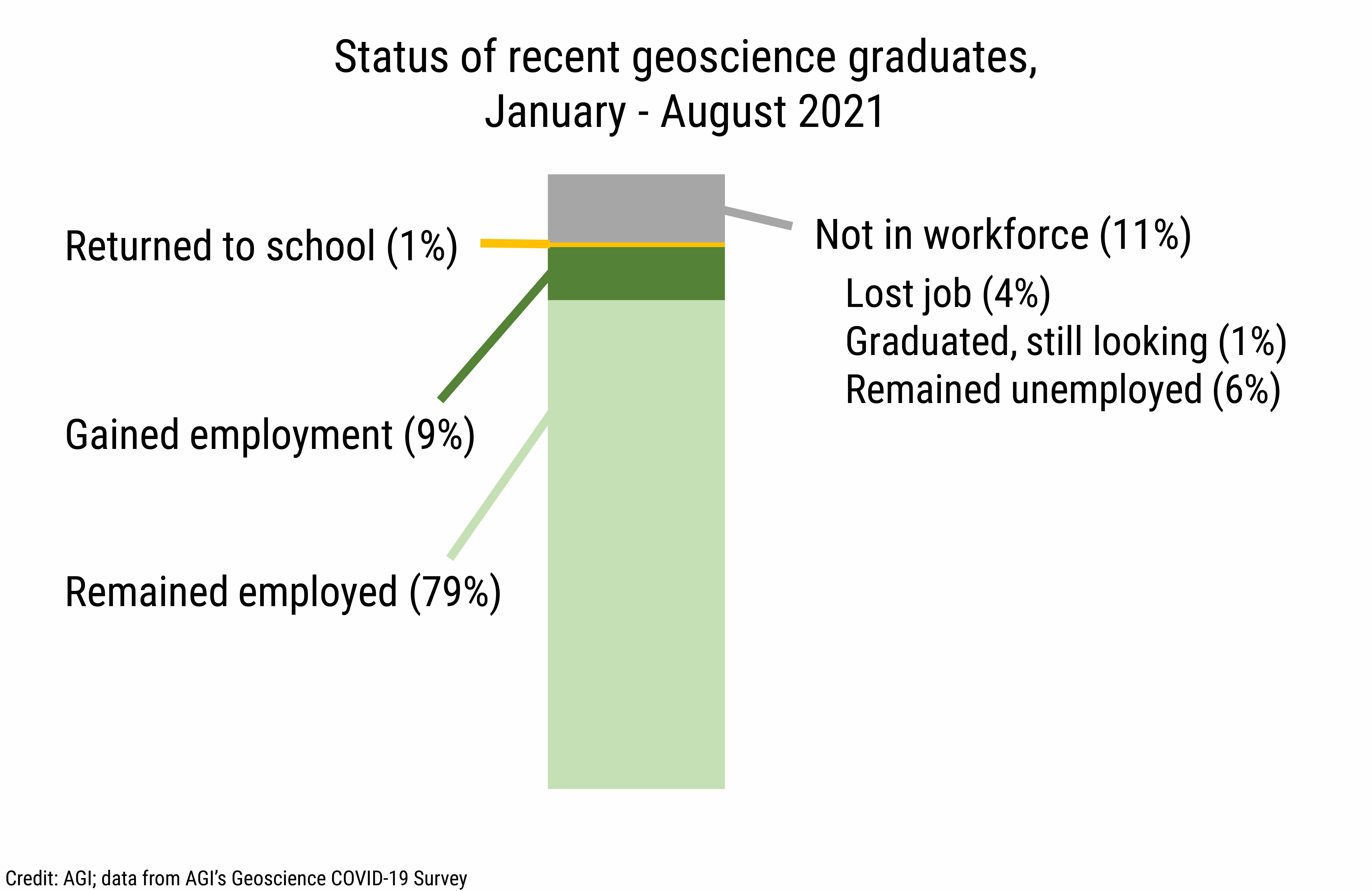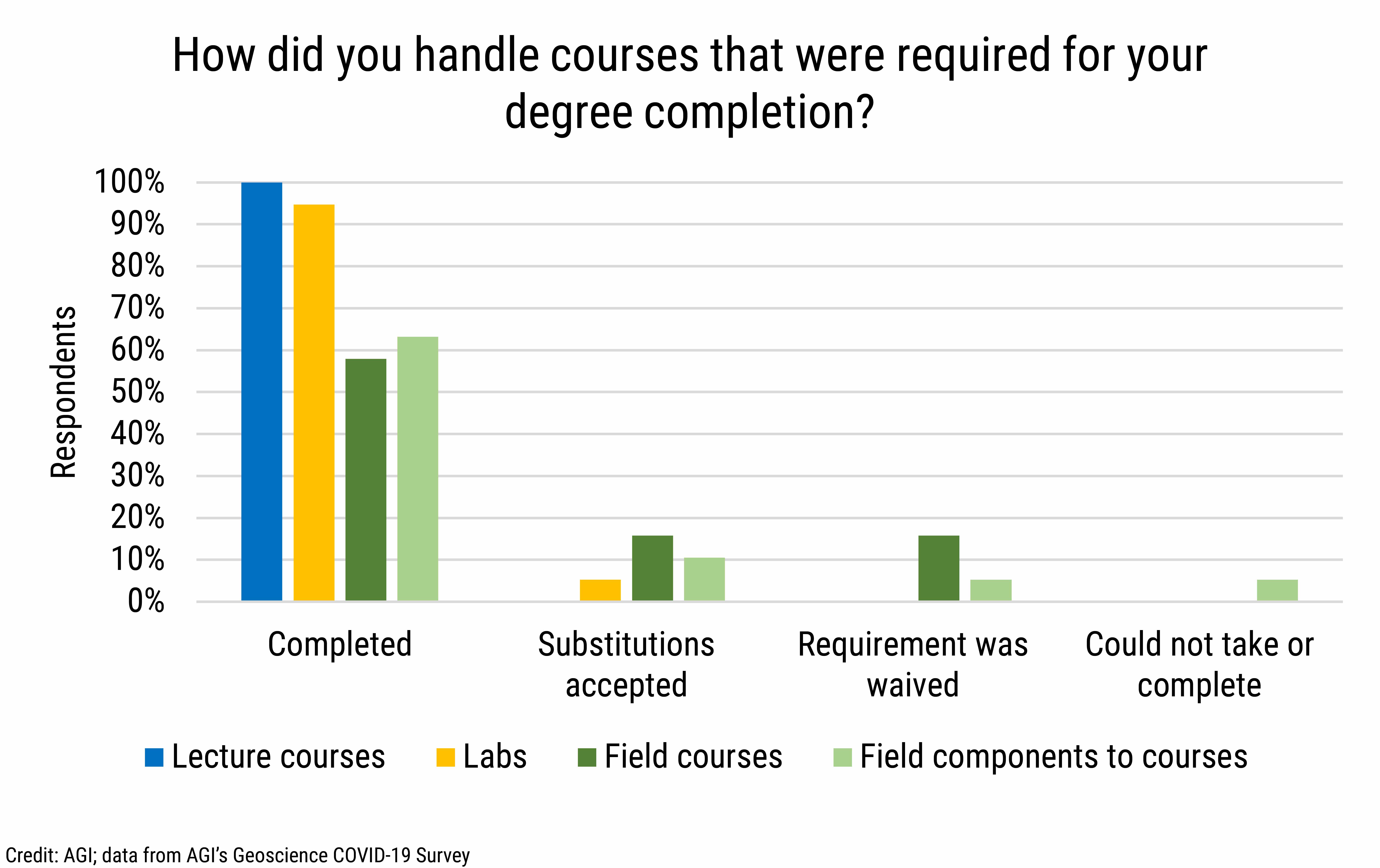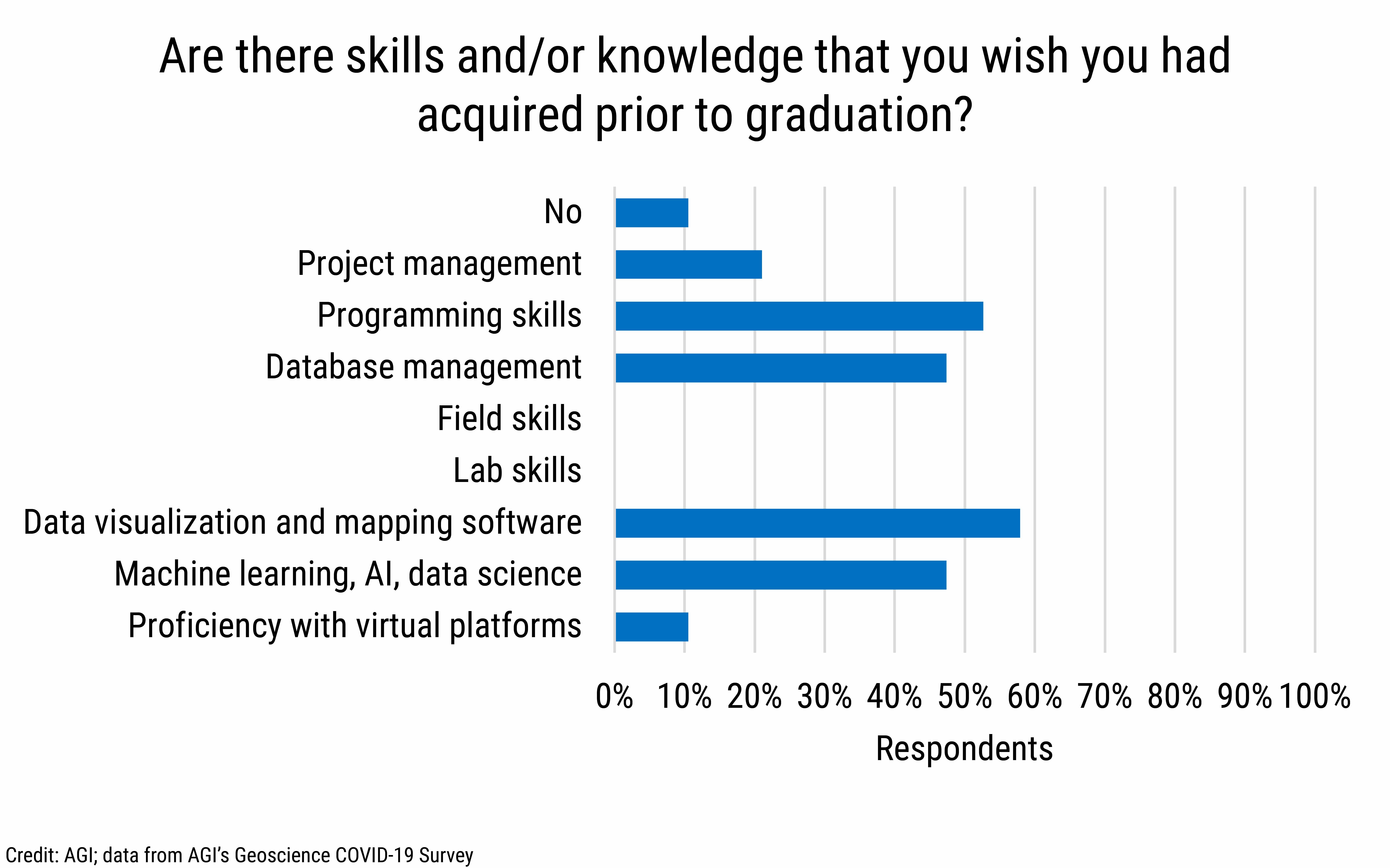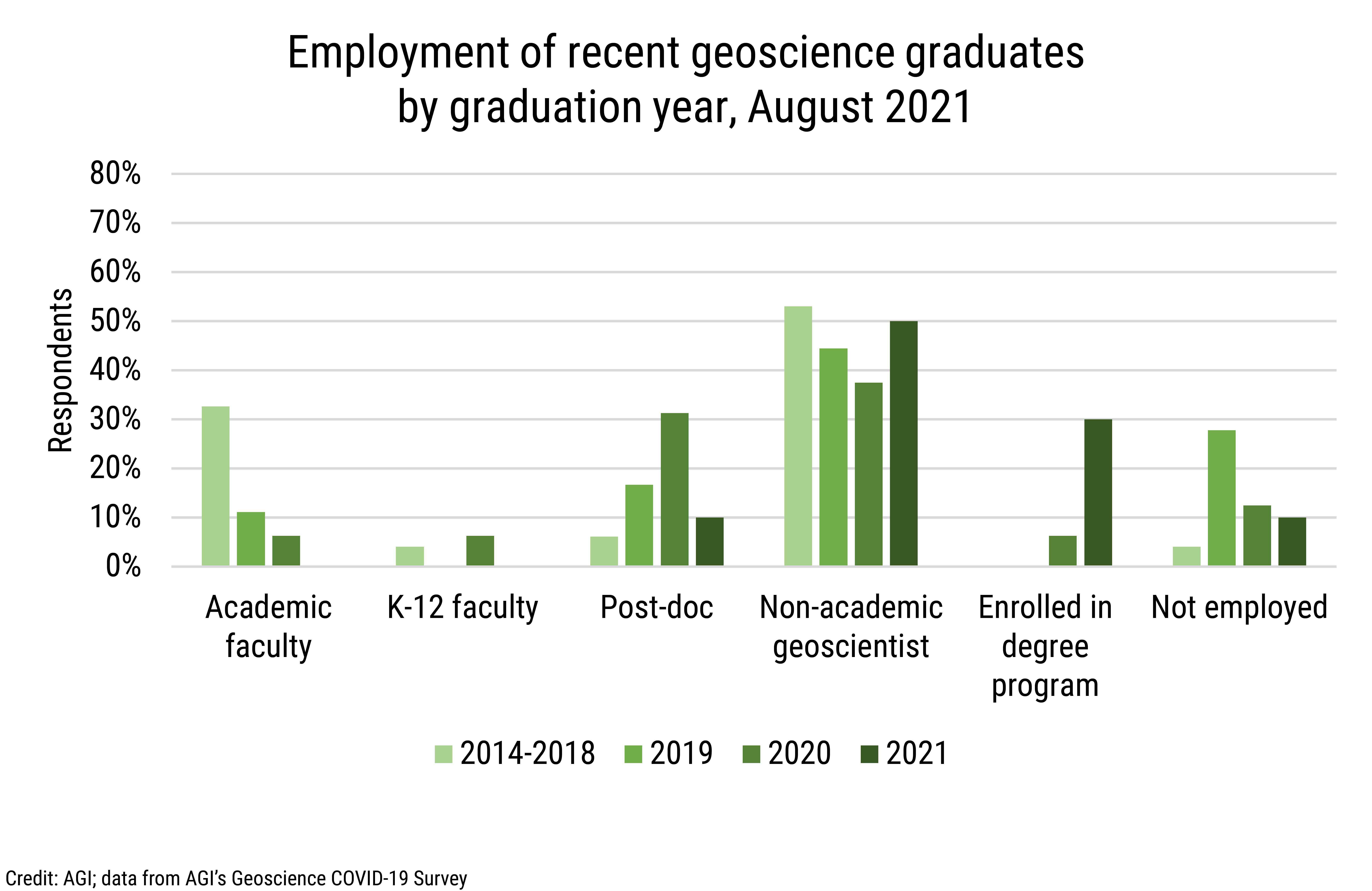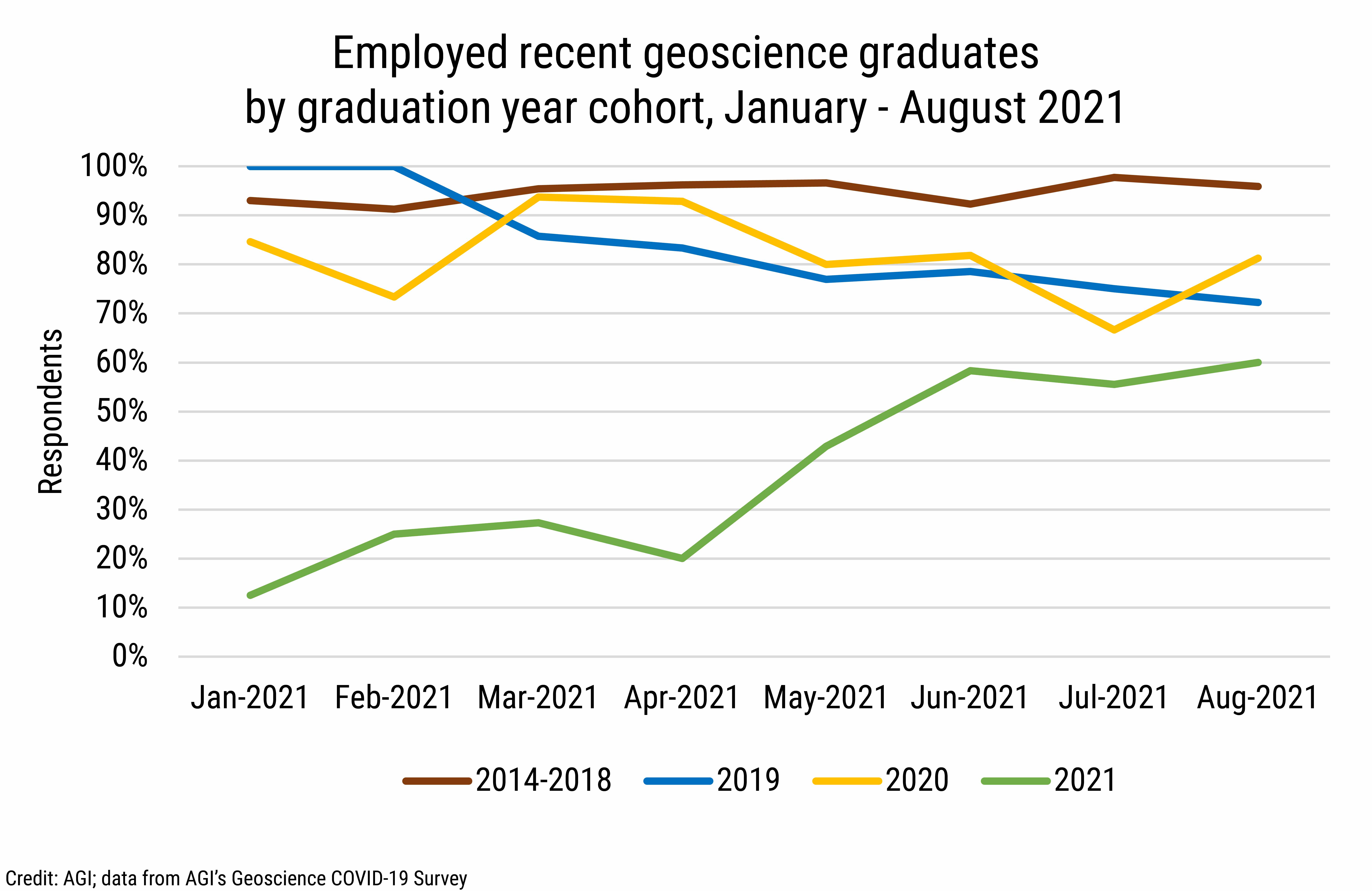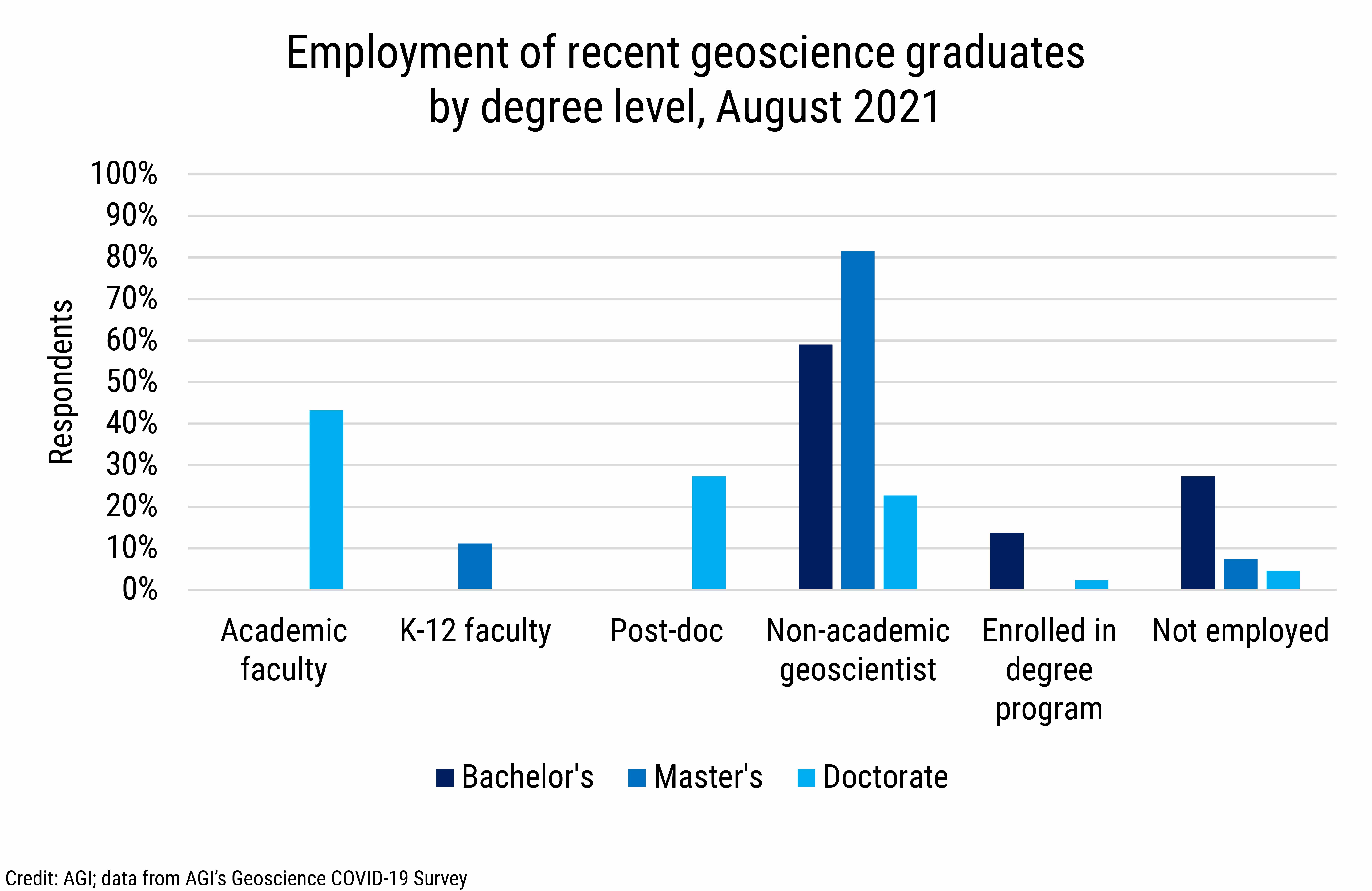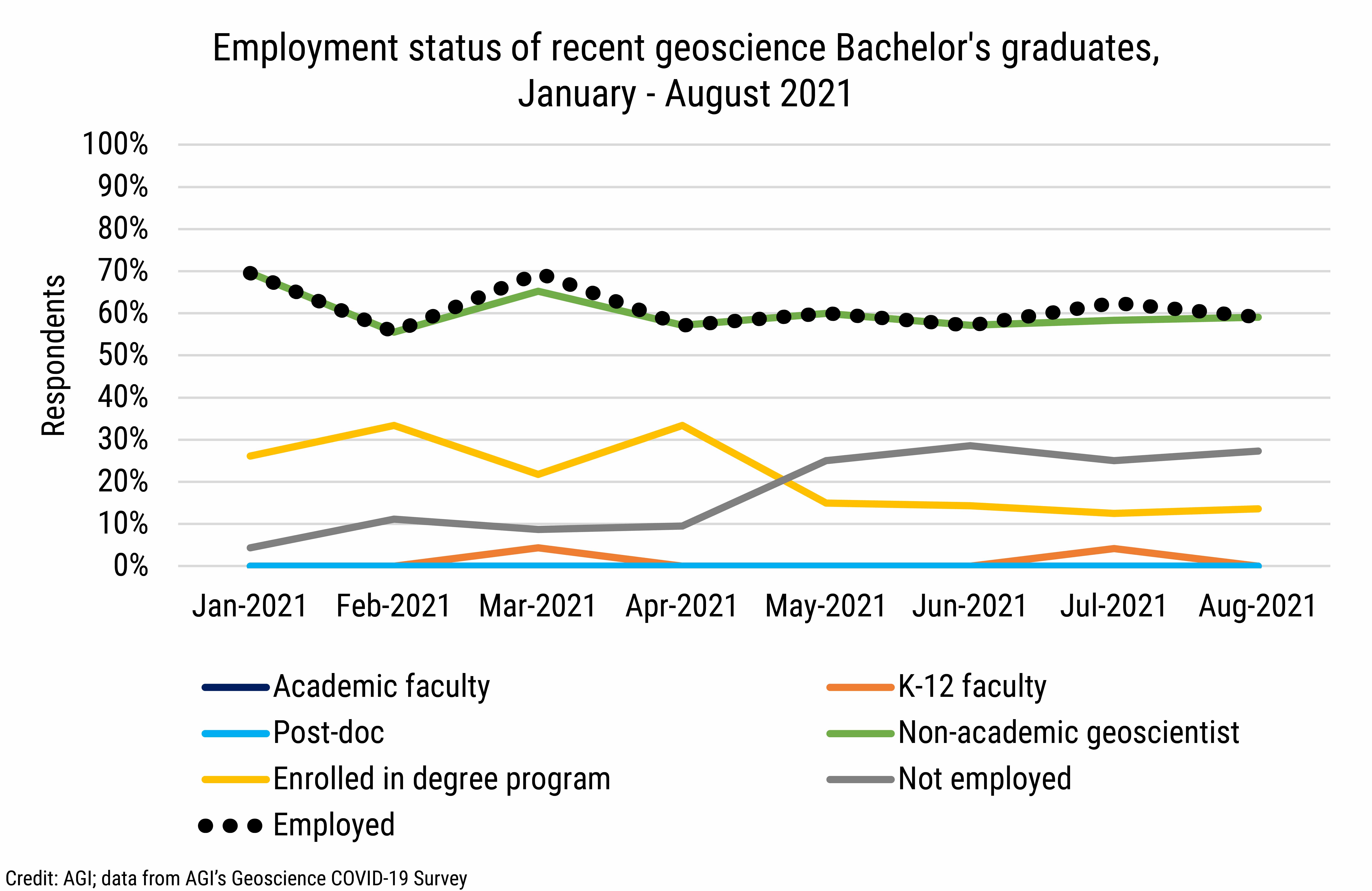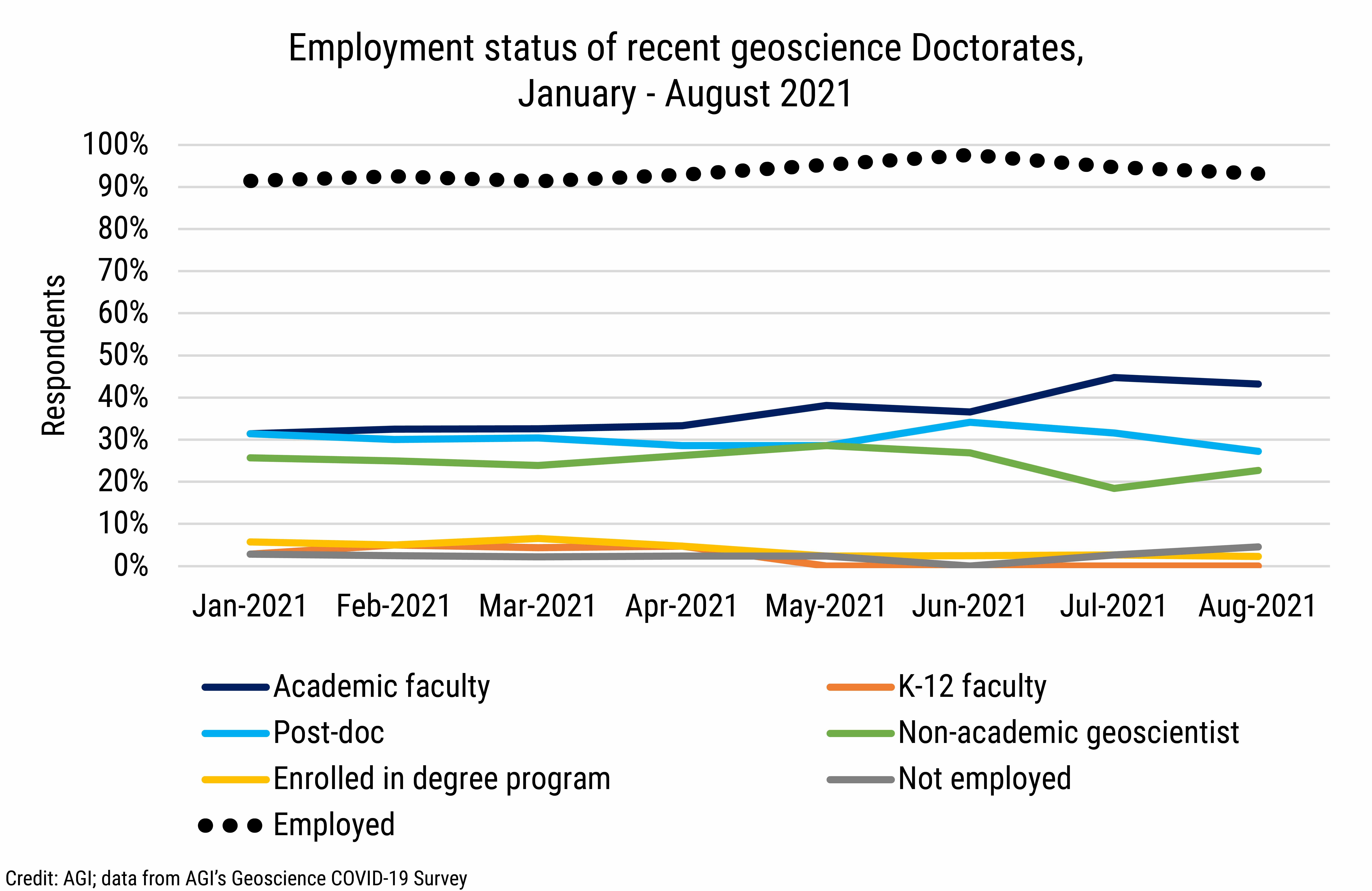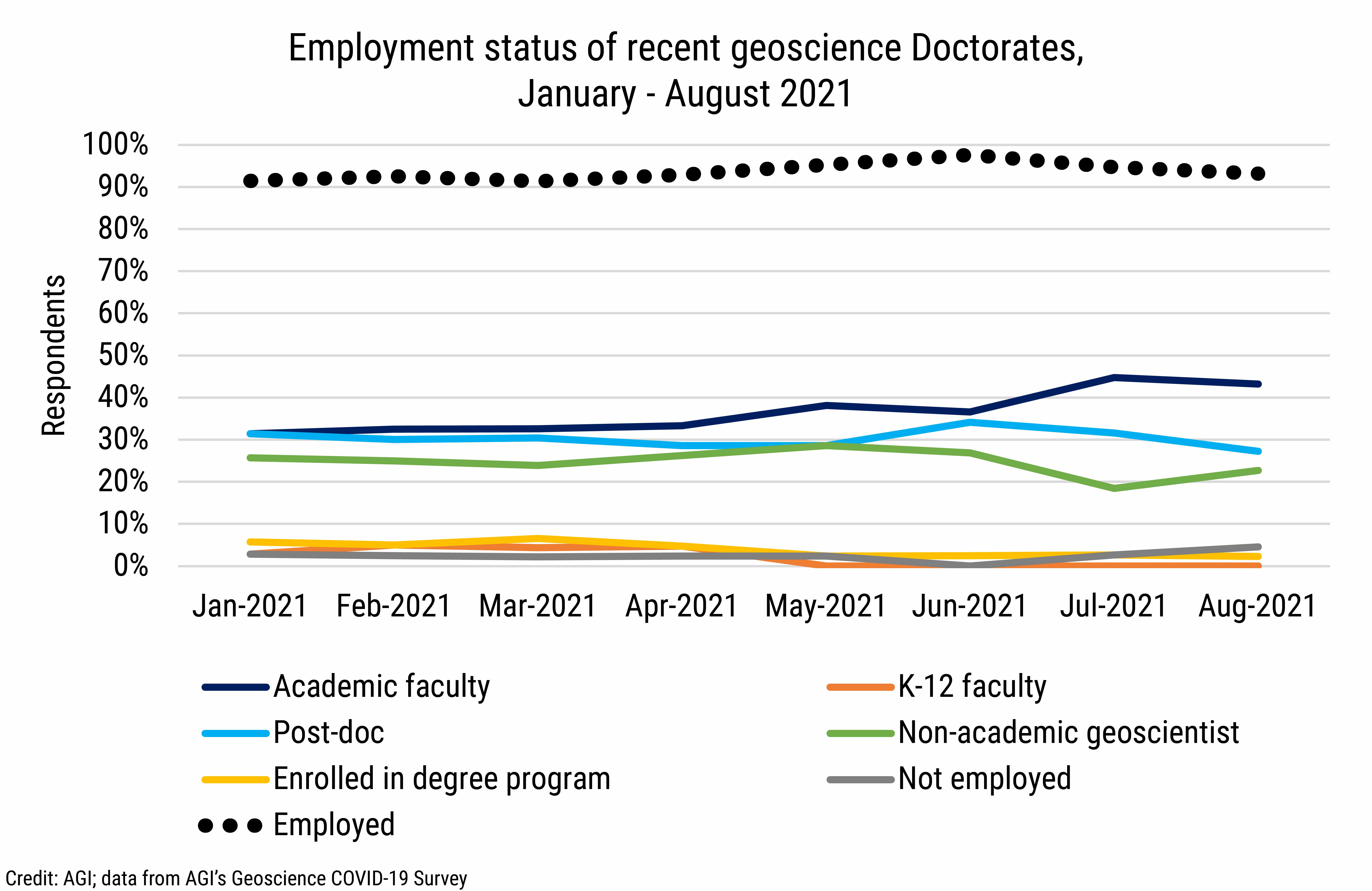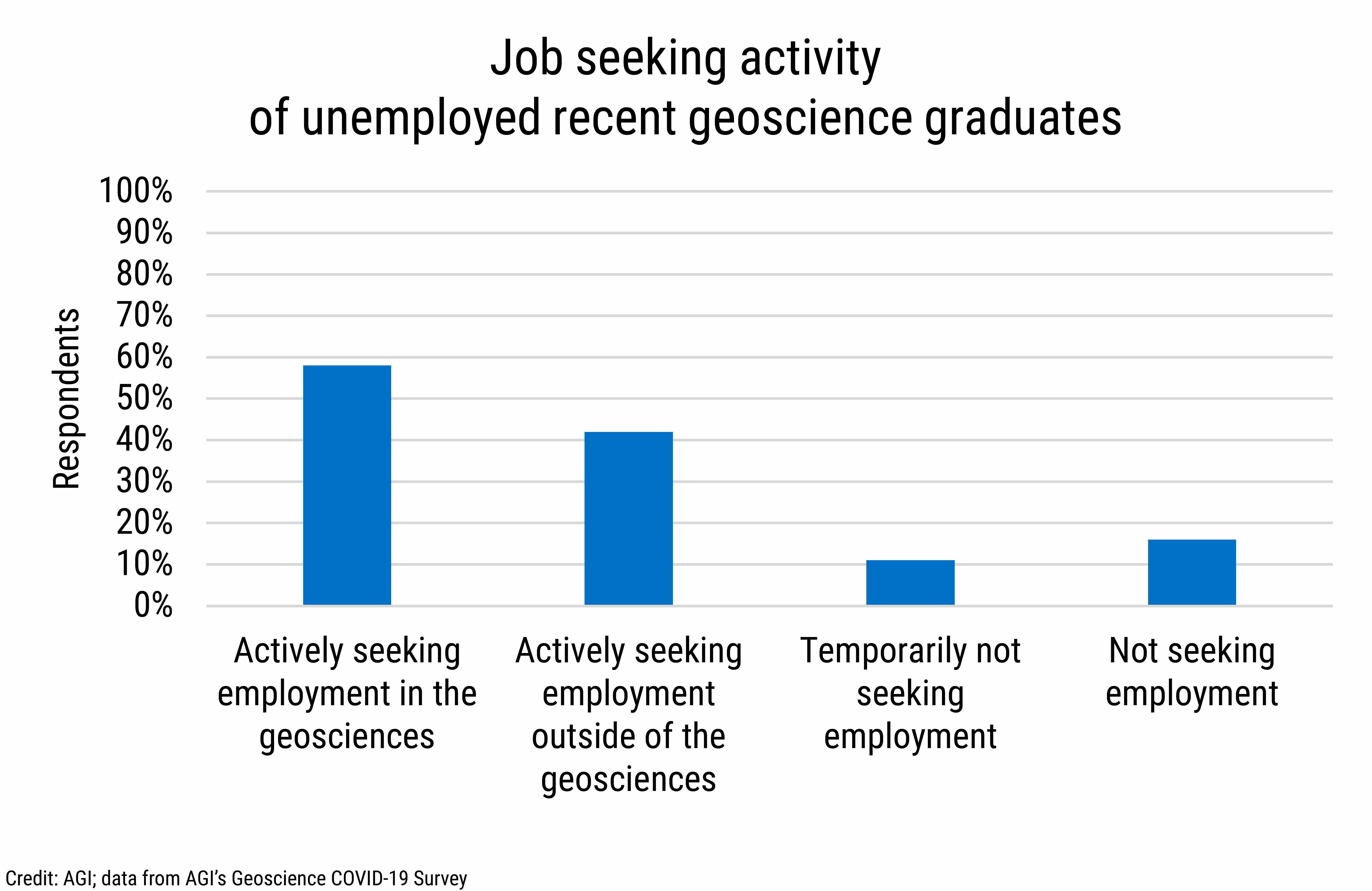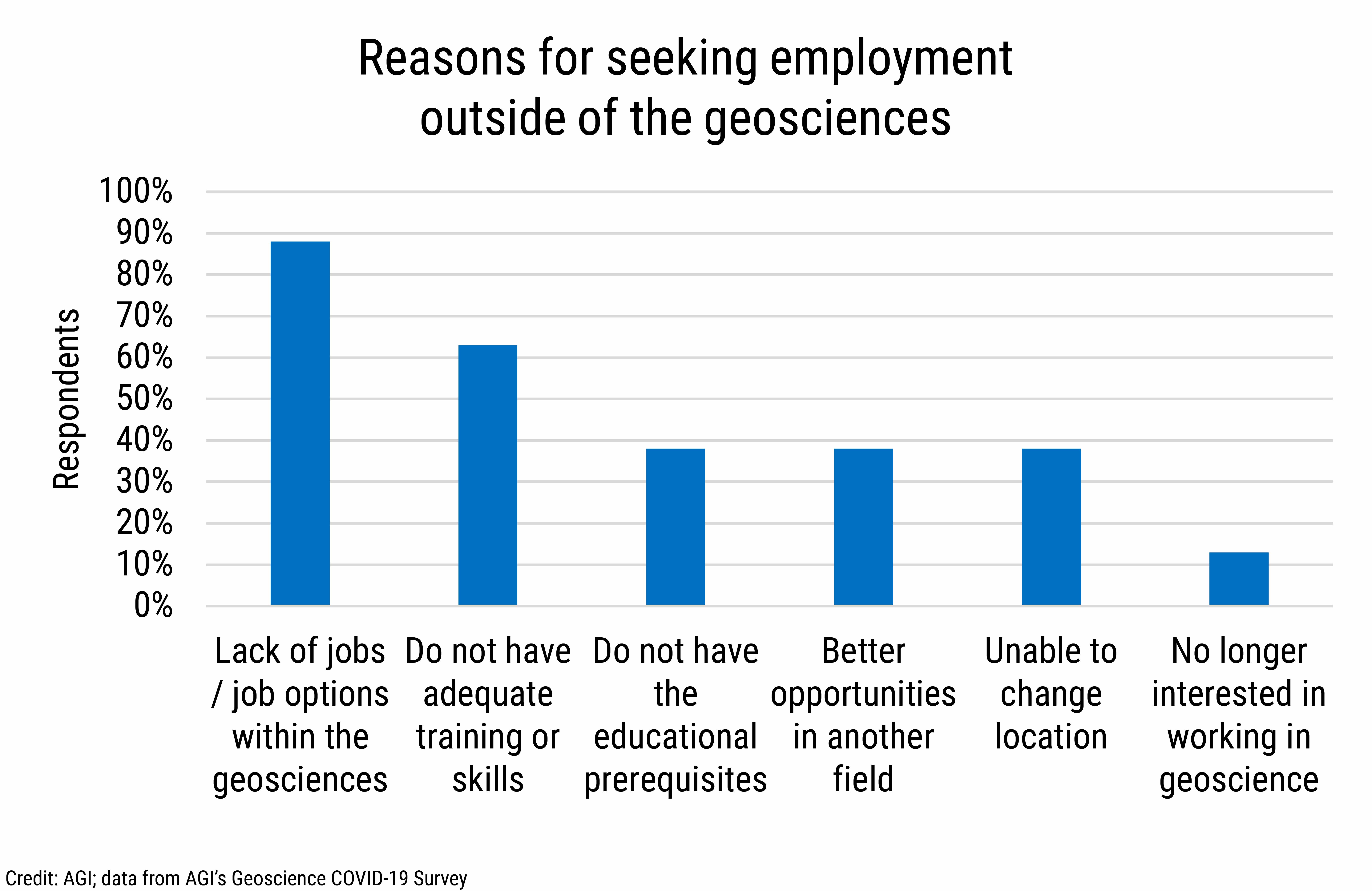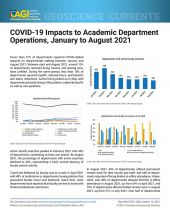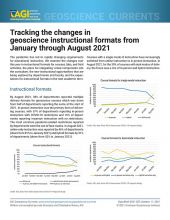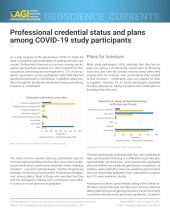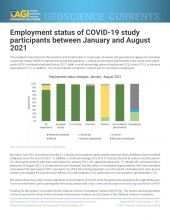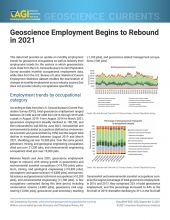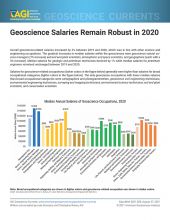The pandemic has been particularly disruptive for students with the massive shift to online and hybrid learning. The disruption has also extended to many ancillary activities, such as job fairs and employment searches with a shift to virtual interactions. Likewise, early career professionals are often vulnerable during economic disruptions with their junior positions in most employers.
Among new and recent graduates in the geosciences, the pandemic does not appear to have been disproportionately disruptive at the macro-level. Interestingly, some internal cohorts, namely the Class of 2019, do appear to be more impacted by the pandemic and may represent a particular expression of the vulnerability of very junior professionals.
Employment status of recent graduates is indicative of a stable workforce with 79% of employed recent graduates maintaining their employment throughout 2021. Some internal movement occurred in 2021 with 4% of employed recent graduates changing jobs. There was also an influx of new graduates into the workforce and unemployed recent graduates who secured employment which accounted for the 9% of recent graduates gaining employment. The pool of unemployed recent graduates was comprised of those who remained unemployed from January through August 2021 (6%), those who lost their job (4%), and those who had graduated and had yet to secure employment (1%).
Over 90% of geoscience students that graduated after the start of the pandemic indicated that they were able to complete required lecture courses and lab sections/courses, and over half indicated that they were able to complete required field courses and field activities. Substitutions and waivers were most commonly reported for field courses and field components that could not otherwise be completed.
Over half of pandemic-era graduates indicated that they wished they had developed data visualization and mapping software skills and programming skills prior to graduation, and 47% of graduating students also indicated that they wished they had learned database management and machine learning, artificial intelligence and data science skills. When asked about how they were acquiring these skills and knowledge, three-quarters of recent graduates indicated that they were using self-taught instruction through books and videos and just over half indicated they were receiving on-the-job training through their employer. Approximately one-quarter of recent graduates indicated that they were taking online courses, short courses or professional training, or teaching themselves using books and videos provided by their employer.
Employment status by year awarded degree
As of August 2021, 96% of geoscience graduates who earned their degree between 2014-2018 were employed, while 72% of graduates from 2019, 81% of graduates from 2020, and 60% of graduates from 2021 reported the same.
Geoscience graduates who earned their degrees between 2014 and 2018 continue to have the most stable employment situation of all recent geoscience graduate cohorts, with at least 90% of graduates employed throughout 2021. Employment of recent graduates who earned their degrees in 2019 showed a steady decline in 2021, while 2020 graduates also saw a decline in employment between April and July 2021 with a potential rebound in August 2021. Graduates earning their degrees in 2021 saw an increase in employment through the early part of the summer, which stabilized in July and August 2021.
Employment status by degree level
Master’s and doctoral graduates had the highest level of employment in August 2021, at 93%, while 73% of bachelor’s graduates were employed or enrolled in a degree program. Master’s and bachelor’s graduates predominantly secured work in non-academic geoscience occupations, while doctoral recipients tended to be employed across academic and non-academic sectors.
Job seeking activity of unemployed recent graduates
Unemployed recent graduates are predominantly seeking employment in the geosciences (58%), and 42% are also seeking employment outside of the geosciences. The most common reasons for seeking employment outside of the geosciences included a lack of job opportunities within the geosciences and not having adequate training or skills for available geoscience jobs. Other reasons mentioned included not having the educational pre-requisites for available geoscience jobs, better opportunities in another field, an inability to change location to take a geoscience job, and a loss of interest in working within the geosciences.
We will continue to provide current snapshots on the impacts of COVID-19 on the geoscience enterprise throughout the year. For more information, and to participate in the study, please visit: https://www.americangeosciences.org/workforce/covid19
Funding for this project is provided by the National Science Foundation (Award #2029570). The results and interpretation of the survey are the views of the American Geosciences Institute and not those of the National Science Foundation.



